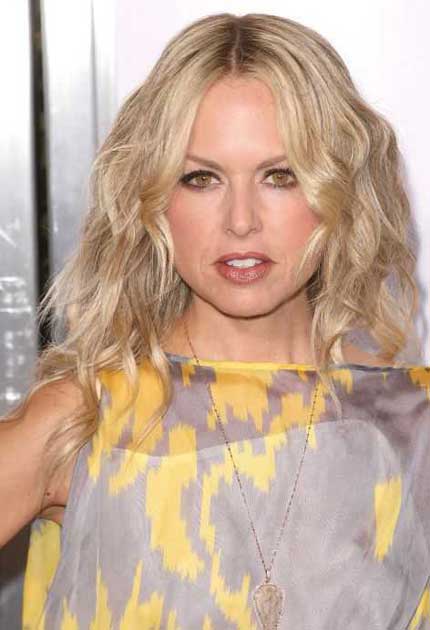Rachel Zoe: The lady vanishes
For two years Rachel Zoe was the superstylist on every Hollywood starlet’s speed dial – until suddenly, she went out of fashion. Now she’s back with a reality show. By Alice-Azania Jarvis

And so, like a skeleton from the grave, Rachel Zoe, the celeby-ist of the celebrity stylists, is back – albeit in the rather undignified form of a reality TV show. “If I do a show, I want it to be about the history of fashion,” she said back in 2007. But celebrity is a fickle thing, and Zoe (pronounced “zo”) knows that better than most: two years ago, she found herself grinding to a halt after a brief but rapid ride on the rollercoaster of fame.
If you’re not even sure who she is – as well you might not, if Grazia and Heat aren’t top of your weekly reading list – then the answer, in brief, is this: Rachel Zoe is the reason lots of young women want to look like Nicole Richie, the reason fake tan is such a summer essential, and the reason the high street is still so dominated by girls in bug-eyed glasses. As a stylist to the stars, she achieved an unprecedented amount of individual celebrity.
For two fleeting years, she was a must-have in every fashion front row, not to mention on every starlet’s speed dial. And then, suddenly, she wasn’t; she was “fashion road kill”, so to speak, accused of everything from drug-smuggling to, according to the LA Times, “single-handedly bringing back anorexia.” Zoe’s rise to notoriety began back in 2005, when she was hired by Richie, then Paris Hilton’s unglamorous side-kick on the air-brained reality showThe Simple Life, to improve her fairly disastrous red-carpet wardrobe.
Previously, Zoe had pursued a not-terribly-illustrious career as a magazine stylist, working mainly for American teen title YM. But, under her guidance, Richie blossomed from Lycra-loving B-lister to considerably bonier red carpet regular, dressed always in the 1970s Boho-lux favoured by Zoe herself. The transformation made Richie perfect tabloid fodder; soon, pictures of her striding out of Starbucks, or into Gucci, were everywhere.
It wasn’t long before Richie’s contemporaries cottoned on, and Zoe became the go-to girl for a gaggle of attention-hungry starlets. Kate Beckinsale, Cameron Diaz and Jessica Alba all dialled her number, though it was Lindsay Lohan, Mischa Barton, and, of course, Richie who really personified Zoe’s look. Sporting maxi-dresses and bangles, they would arrive at premieres – and fall out of night clubs – together, much to the delight of the waiting paparazzi.
Unusually for a stylist, Zoe could often be seen with them - and not hovering in the background, but front and centre, smiling into the flashbulbs. Soon Rachel Zoe became, if not quite a household name, then a tabloid one, and her young wards “the Zoe-bots”. Because of designers’ dependence on her clients, Zoe quickly became every fashion house’s new best friend. By the end of 2006, Zoe was dressing what seemed like most of Hollywood – charging rates of more than $6,000 a day – as well as collaborating with Marchesa and Jimmy Choo, coordinating the relaunch of the classic 1970s New York fashion label Halston, and publishing her first book.
In short, she was ubiquitous. And then the tide started to turn. In December of that year, Richie mysteriously sacked her stylist and posted a blog on MySpace: “Which 35-year old raisin face whispers her order of three pieces of asparagus for dinner, and hides a deathly disorder by pointing at me?” To many, the post confirmed what had long been suspected: that part of the “Zoe-bot” aesthetic involved a size-zero frame.
To make matters worse her designing ambitions were going awry; Halston wasn’t the success predicted and there was talk of tension between Zoe and the management team. She was working with fewer clients, and her boho look was fading from vogue. She had virtually no fashion-world credentials; her look was too bright, too brash, too obvious to win over the avant-garde tastemakers of Paris and Milan. Her celebrity had turned sour; she was nicknamed “demon Zoe” on Gawker and “Queen of the Underworld” everywhere else.
For the past year-and-a-half, little has been heard of Zoe. No longer: The Rachel Zoe Project arrives on the Really lifestyle channel later this month, promising to show the stylist with “her trusted inner circle as they take business to the next level.” Early indicators suggest a suitably ephemeral offering, with a healthy serving of California slang (“dope” competes with “I die!” for Zoe’s most favoured phrase). Will it steer Zoe’s rollercoaster ride in an upwards direction? It’s too early to say. But with a star this controversial, it can’t hurt to keep watching.
Subscribe to Independent Premium to bookmark this article
Want to bookmark your favourite articles and stories to read or reference later? Start your Independent Premium subscription today.

Join our commenting forum
Join thought-provoking conversations, follow other Independent readers and see their replies